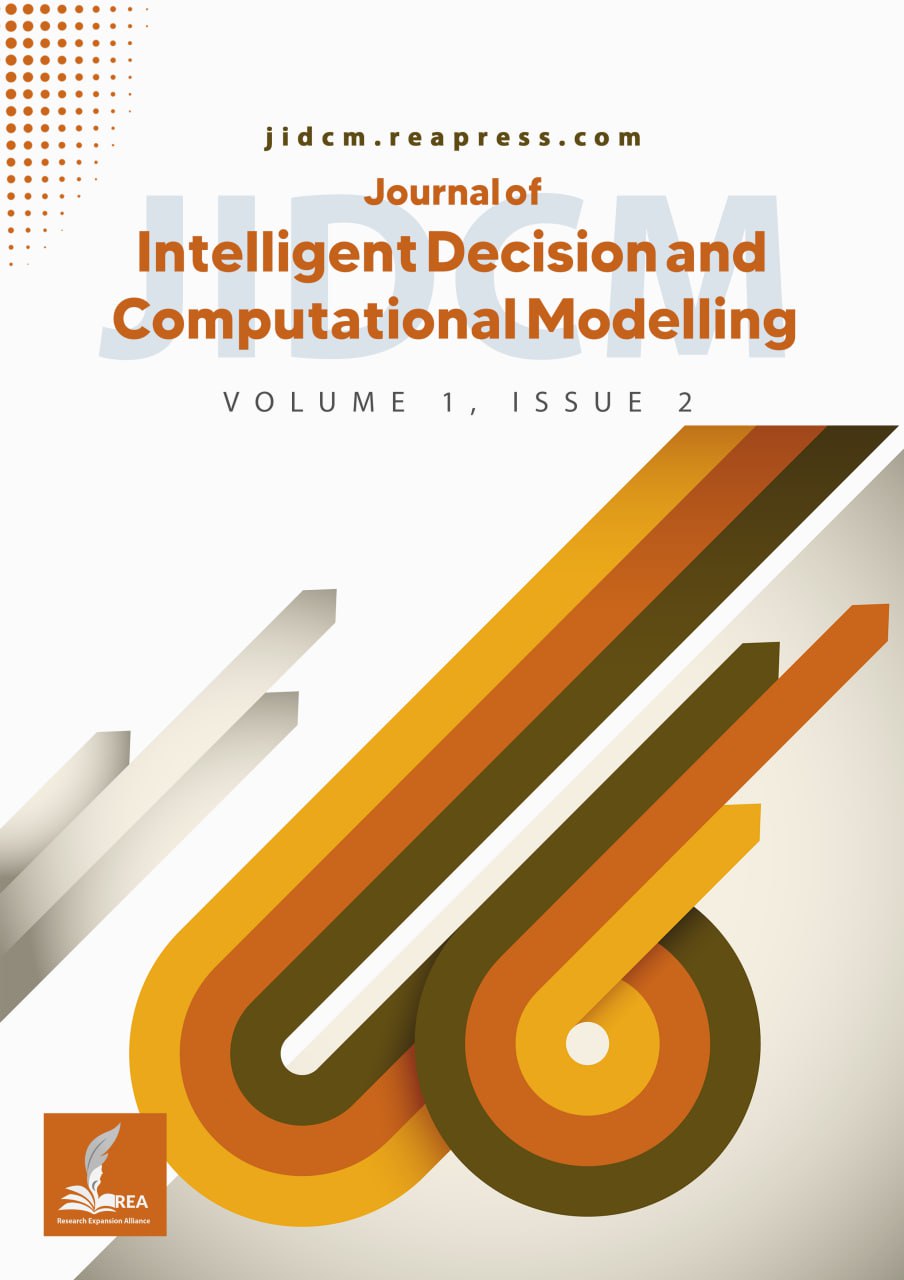Portfolio Directional Distance Function Models with a Stochastic Jump Process
Abstract
Portfolio optimization problems include the selection of different assets to invest in order to maximize the return and minimize the risk. In practice, the models account for asset returns that skewness, Kurtosis, and heavy tails characterize. For this purpose, we describe the dynamics of assets’ returns with the Variance Gamma (VG) process from Lévy processes by considering the skewness and Kurtosis of the assets' return rate. We employ Data Envelopment Analysis (DEA) methodology alongside Directional Distance Function (DDF), which they able to evaluate different assets' performance by VG process through its constraints, and they identify inefficiencies within asset markets. We introduce two models that seek to simultaneously minimize the risk measure as the input and maximize the mean return as the output of the given asset using the pre-specified direction vector. In the first model, stricter assessments arise from directions emphasizing maximum conditional risk and return. In the second model, mean return-risk values remain constant, suggesting that asset inefficiency is unaffected by changing directions. This unchanging pattern may reflect similar impacts across scenarios or limitations in the mean return-risk metric’s ability to detect directional variations. Instead, asset inefficiency appears to be driven by intrinsic distributional properties, notably skewness and Kurtosis, rather than scenario-specific influences. An empirical example in the Iranian stock market of seven companies is used to validate the models.
Keywords:
Data envelopment analysis, Portfolio optimization, Variance gamma process, Directional distance functionReferences
- [1] Markowitz, H. (1952). Portfolio selection. The journal of finance, 7(1), 77–91. https://doi.org/10.1111/j.1540-6261.1952.tb01525.x
- [2] Markowitz, H. M. (2008). Portfolio selection: Efficient diversification of investments. Yale University Press. https://books.google.com/books?id=GZDyAAAAQBAJ
- [3] Charnes, A., Cooper, W. W., & Rhodes, E. (1978). Measuring the efficiency of decision making units. European journal of operational research, 2(6), 429–444. https://doi.org/10.1016/0377-2217(78)90138-8
- [4] Morey, M. R., & Morey, R. C. (1999). Mutual fund performance appraisals: A multi-horizon perspective with endogenous benchmarking. Omega, 27(2), 241–258. https://doi.org/10.1016/S0305-0483(98)00043-7
- [5] Liu, W., Zhou, Z., Liu, D., & Xiao, H. (2015). Estimation of portfolio efficiency via DEA. Omega, 52, 107–118. https://doi.org/10.1016/j.omega.2014.11.006
- [6] Briec, W., & Kerstens, K. (2009). Multi-horizon Markowitz portfolio performance appraisals: A general approach. Omega, 37(1), 50–62. https://doi.org/10.1016/j.omega.2006.07.007
- [7] Joro, T., & Na, P. (2006). Portfolio performance evaluation in a mean–variance–skewness framework. European journal of operational research, 175(1), 446–461. https://doi.org/10.1016/j.ejor.2005.05.006
- [8] Kerstens, K., Mounir, A., & Van de Woestyne, I. (2011). Geometric representation of the mean–variance–skewness portfolio frontier based upon the shortage function. European journal of operational research, 210(1), 81–94. https://doi.org/10.1016/j.ejor.2010.09.014
- [9] Chambers, R. G., Chung, Y., & Färe, R. (1998). Profit, directional distance functions, and nerlovian efficiency. Journal of optimization theory and applications, 98(2), 351–364. https://doi.org/10.1023/A:1022637501082
- [10] Fukuyama, H., & Weber, W. L. (2004). Economic inefficiency measurement of input spending when decision-making units face different input prices. Journal of the operational research society, 55(10), 1102–1110. https://doi.org/10.1057/palgrave.jors.2601750
- [11] Shephard, R. W. (1953). Cost and production functions. Princeton University Press. https://books.google.com/books?id=I7u6BgNZuacC
- [12] Shephard, R. W. (1970). Theory of cost and production functions. Princeton University Press. https://B2n.ir/nn8667
- [13] Sahoo, B. K., Mehdiloozad, M., & Tone, K. (2014). Cost, revenue and profit efficiency measurement in DEA: A directional distance function approach. European journal of operational research, 237(3), 921–931. https://doi.org/10.1016/j.ejor.2014.02.017
- [14] Tavana, M., Izadikhah, M., Toloo, M., & Roostaee, R. (2021). A new non-radial directional distance model for data envelopment analysis problems with negative and flexible measures. Omega, 102, 102355. https://doi.org/10.1016/j.omega.2020.102355
- [15] Kraus, A., & Litzenberger, R. H. (1976). Skewness preference and the valuation of risk assets. The journal of finance, 31(4), 1085–1100. https://doi.org/10.2307/2326275
- [16] Artzner, P., Delbaen, F., Eber, J. M., & Heath, D. (1997). Thinking coherently risk. Journal of risk, 10(68), 71. https://people.math.ethz.ch/~delbaen/ftp/preprints/CoherentMF.pdf
- [17] Artzner, P., Delbaen, F., Eber, J. M., & Heath, D. (1999). Coherent measures of risk. Mathematical finance, 9(3), 203–228. https://doi.org/10.1111/1467-9965.00068
- [18] Andersson, F., Mausser, H., Rosen, D., & Uryasev, S. (2001). Credit risk optimization with conditional value-at-risk criterion. Mathematical programming, 89(2), 273–291. https://doi.org/10.1007/PL00011399
- [19] Alexander, S., Coleman, T. F., & Li, Y. (2003). Derivative portfolio hedging based on CVaR. New risk measures in investment and regulation: Wiley. https://cs.uwaterloo.ca/~yuying/papers/cvarBook.pdf
- [20] Yu, J., Yang, X., & Li, S. (2009). Portfolio optimization with CVaR under VG process. Research in international business and finance, 23(1), 107–116. https://doi.org/10.1016/j.ribaf.2008.07.004
- [21] Madan, D. B., Carr, P. P., & Chang, E. C. (1998). The variance gamma process and option pricing. Review of finance, 2(1), 79–105. https://doi.org/10.1023/A:1009703431535
- [22] Bergmann, D. R., Ferreira Savoia, J. R., Felisoni de Angelo, C., Contani, E. A. do R., & Silva, F. L. da. (2018). Portfolio management with tail dependence. Applied economics, 50(51), 5510–5520. https://doi.org/10.1080/00036846.2018.1487000
- [23] Xu, C., Yang, F., & Sun, Y. (2019). An efficient acceleration monte carlo simulation for pricing Asian option under variance gamma process by splitting. International journal of computer mathematics, 96(12), 2522–2532. https://doi.org/10.1080/00207160.2019.1577399
- [24] Mirsadeghpour Zoghi, S. M., Sanei, M., Tohidi, G., Banihashemi, S., & Modarresi, N. (2023). Performance evaluation of investment with DEA models under pure jump processes. Concurrency and computation: practice and experience, 35(3), e7502. https://doi.org/10.1002/cpe.7502
- [25] Rockafellar, R. T., & Uryasev, S. (2000). Optimization of conditional value-at-risk. The journal of risk, 2(3), 21–41. https://doi.org/10.21314/jor.2000.038
- [26] Lynn, M. (2014). Are you brave enough to invest in Iran? https://B2n.ir/qt2434


